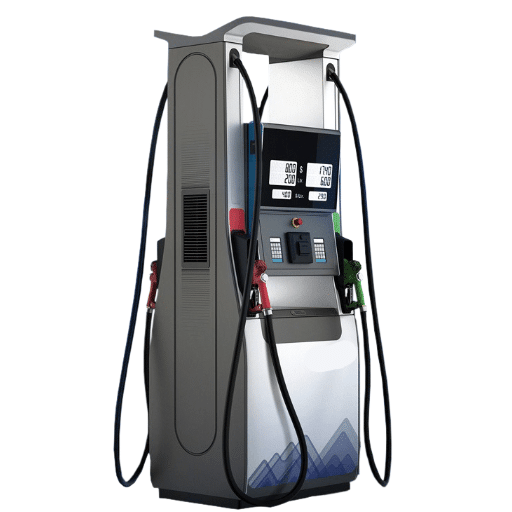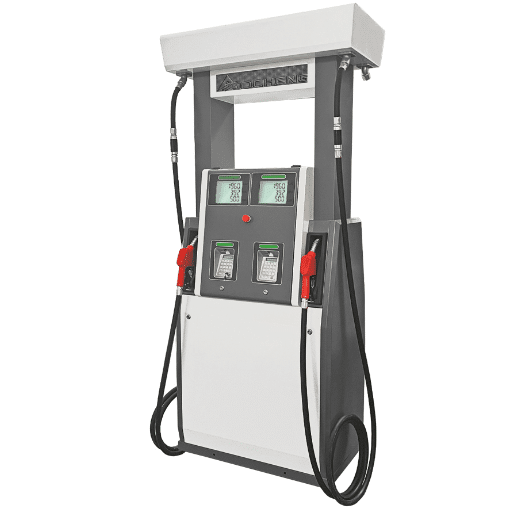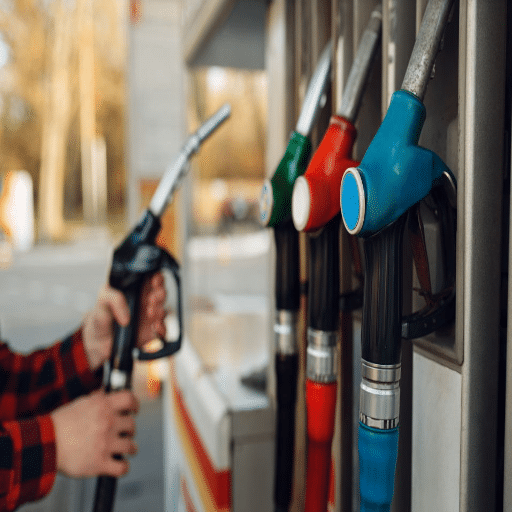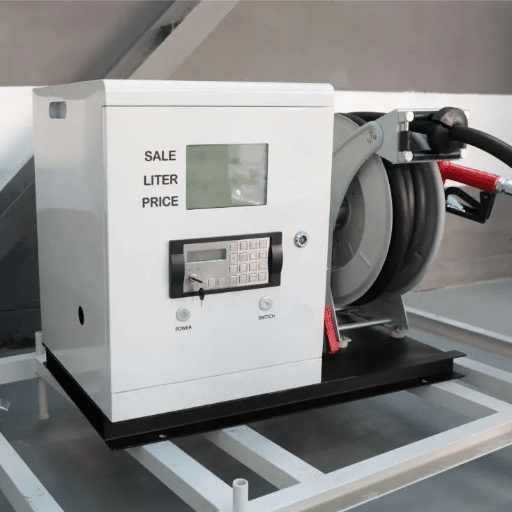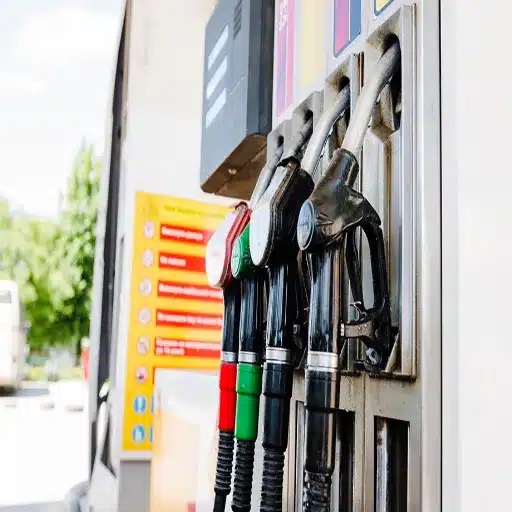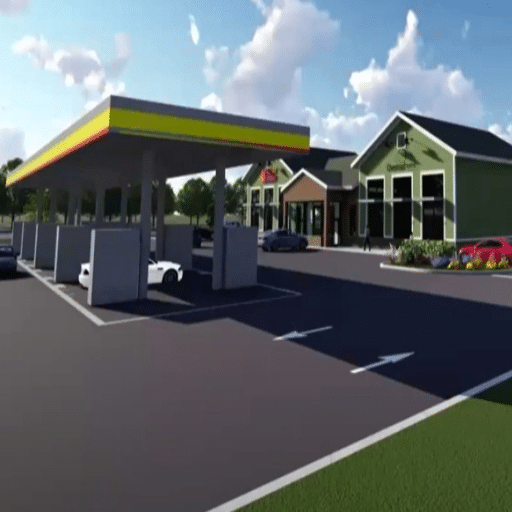Though gas stations mainly sell petroleum, the pleasure is created in modern times with a well-equipped and efficient environment for drivers. Can we suppose adequate equipment to include all dispensers equipped for close tolerances, state-of-the-art point-of-sale systems? A fine kit improves all kinds of operations and brings customer satisfaction and loyalty to their side. The article dives into the list of essential equipment required by any modern fuel station to stay in competition and to render great service. If you are upgrading your old one or setting up a new one, the article will provide you with much information about the tools and technologies that combine to form the foundation of a successful gas station.
Overview of Gas Station Equipment
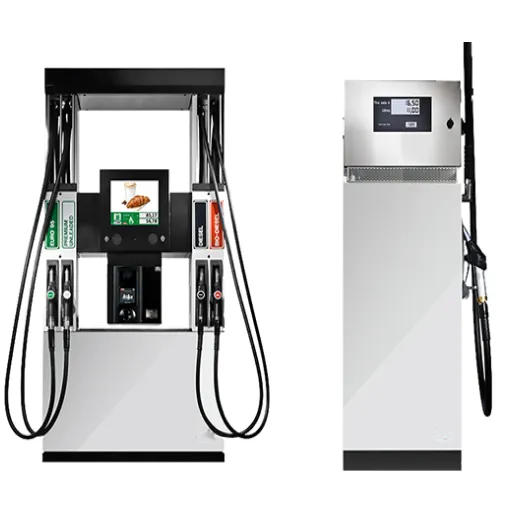
The very crucial equipment for gas stations to function efficiently and deliver their services to customers is addressed here. The main components consist of fuel dispensers for fuel delivery; safe and accurate POS systems that enable easy transactions, and underground storage tanks, or USTs, for the storage of fuel. Air and water stations, canopy lighting, and the like could be installed as an added convenience for the customers to provide an all-around kind of functionality for the station. It is that bit extra to have the very best type of equipment, truly durable, capable of giving a smooth operation through time.
What is Gas Station Equipment?
To operate smoothly and safely, and efficiently with ease for the customers, gas station equipment must be appropriately set up. Modern fuel dispenser – the very heart of any station – employs state-of-the-art technology to measure and deliver fuel accurately. Digital screens and contactless payment options add to the consumer’s ease and help speed up transaction time.
Underground storage tanks are essential for working with fuels securely. They are either fiberglass or lined steel tanks designed to prevent any contamination or leakage. Usually, these tanks are fitted with systems that indicate pressure anomalies or fuel levels and thus realize compliance with the regulations. Based on statistics available, there are slightly more than 540,000 USTs managed actively under environmental protection programs only within the United States.
540,000+ USTsActive underground storage tanks managed under environmental protection programs in the United States
Nowadays, POS systems have numerous features like mobile payment, loyalty points, and real-time tracking of inventories. Adequate canopy lighting grants good visibility and security while often coming with LED options for energy efficiency to cut down operating costs. Air and water stations for tire inflation and vehicle maintenance offer many conveniences for the drivers, with signage being the perfect companion in guiding traffic and fostering advertisements.
The purchase of best-quality equipment has long-term effects while influencing the level of operational efficiency and the preference of customers, with recent emphasis on getting smart and green to serve present-day demands. These improvements keep gas stations relevant in a world that increasingly focuses on innovation and sustainability.
Importance of Quality Station Equipment
Quality station equipment is the backbone of a high-functioning gas station, wherein smooth service delivery ensures customer satisfaction. For instance, premium fuel dispensers help fuel cars faster and more accurately, thus cutting down waiting periods for customers. According to research, upgraded equipment can raise operational efficiency by 25%, as modern dispensers come with features such as higher flow rates and accurate metering systems.
25% Increase in Operational EfficiencyResearch shows upgraded equipment significantly improves gas station operations
Of equal importance has been the integration of contemporary payment technologies with cashless and mobile app options that maximize consumer convenience. Industry statistics show gas stations with such technologies experience about a 15% increase in transaction times, thereby improving customer throughput. It is also essential to note that durable and low-maintenance equipment results in fewer downtimes, reducing nuisance-based disruptions at the operational front and the costs of long-term repair.
15% Faster Transaction TimesGas stations with modern payment technologies improve customer throughput
Good equipment is very important for promoting sustainability. Vapor recovery systems, for instance, work to reduce emissions at the pump, thereby meeting environmental standards and reducing carbon footprints. Then again, LED lighting and efficient refrigeration in convenience stores can yield energy savings of up to 60%, hence cutting the costs of electricity.
60% Energy SavingsLED lighting and efficient refrigeration systems significantly reduce electricity costs
In this way, a business would be able to sell station equipment that is environmentally friendly and efficient in order to meet increasing consumer demands for speedy, convenient, and environmentally responsible transactions.
Types of Fuel Station Equipment
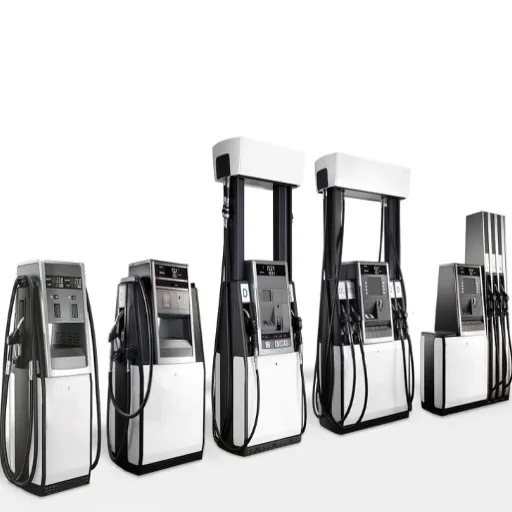
Fuel stations maintain a wide range of specialized equipment to remain functional, efficient, and customer-friendly. The following is an overview of fuel station equipment, along with relevant details and data.
1. Fuel Dispensing and Pumping Facilities
Fuel dispensing stands at the very center of any station from which a vehicle is refueled. Contemporary dispensers have digital displays, systems for card payment, and meters that measure the dispensation of fuel to a very specific level. The high-tech nature of these pumps also minimizes vapor loss and maximizes flow rates, with an average of 10 gallons per minute being dispensed while meeting According to environmental standards.
2. Storage Tanks
Fuel storage tanks constitute an essential apparatus used to store gasoline, diesel, or alternative fuels in huge quantities. USTs are favored for their ability to conserve space and meet stringent requirements for environmental safety. The more advanced tanks would be the double-walled ones, accompanied by leak-detection systems to enable storing fuel safely and efficiently. It is said by statistics that up to 98% contamination risk through tanks is prevented by the use of the leak detection system in modern tanks.
3. Point-of-Sale Systems
Integration of the fuel payment with convenience store purchases is offered by POS systems, granting agile transaction processing for both customers and operators. These systems support contactless payment, loyalty program integration, and inventory tracking in real time, thereby enhancing operational efficiency and customer satisfaction. It was found out that stations that had invested in newer POS systems were recorded to be about 15% faster in conducting transactions, while having close to a 20% upsurge in retaining customers.
4. Forecourt Accessories
Forecourt accessories like fuel hoses, nozzles, and lighting systems have to be there to ensure on-site smooth operations and safety. In recent times, LED forecourt lighting has found much popularity because it consumes 75% less electricity than conventional lighting systems. Moreover, special-grade, durable fuel hoses and nozzles help bring down maintenance costs while guaranteeing enhanced performance in high-demand situations.
5. Alternative Fuel Intersection
Along with electric and hybrid vehicles, stations have started putting up charging stations for electric vehicles (EVs) alongside the conventional fuel pumps. By 2023, the number of EV chargers installed in the U.S. surged past the 140,000 mark, depicting growing demand for infrastructure that supports cleaner energy stances. High-powered DC fast chargers can get your EV battery charged to approximately 80% in less than 30 minutes, very much in tune with customers’ demand for convenience and speed.
6. Safety and Monitoring Systems
The proper safety procedures at petrol stations are a must. Fire suppression equipment, spill containment kits, and tank monitoring instruments basically constitute a first line of defense against accidents or any incidents of environmental degradation. An automated monitoring system can alert the operator to an inventory level, leakage, or equipment condition change in real-time so that the operator can promptly address the situation.
Setting up modern fuel station systems will allow for smooth operations, promote less environmental nuisance, and meet the requirements of a different breed of energy-conscious customers of the present day.
Key Components of Fuel Station Equipment
- Fuel Dispensers: Required to safely dispense fuel to the vehicles, to guarantee accuracy and efficiency in the transaction.
- Storage Tanks: Used to securely store fuel underground or sometimes above-ground, designed from materials that are resistant to leaks and contamination.
- Fuel Pumps: Pumps are used to pump fuel upward from the storage tanks to the dispensers, providing an unsteady and regulated flow.
- Vapor Recovery Systems: Are designed to reduce the emission of harmful vapors during refueling for environmental safety and compliance.
- Monitoring Systems: Track fuel level automatically, set off alarms in case of leak, keep working order for all equipment to enhance safety and efficiency.
- Containment Systems for Spills: Stop the spill from contaminating the surroundings.
- Payment Terminals: Allow sellers and buyers to transact without a hitch, mostly integrated with the latest technologies for contactless payments.
The components, thus, operate to discharge from fuel stations safely, efficiently, and environmentally responsibly.
Fuel Pumps: Types and Functions
Fuel pumps play a vital role in every fuel station in dispensing fuel into vehicles safely and efficiently. There are different types of fuel pumps for varying needs:
Suction Pumps
These pumps draw the fuel from underground storage tanks to the dispenser by means of suction. They are generally seen in locations where the pump and the tank are in proximity.
Submersible Pumps
These pumps are found inside the fuel tank and push fuel upwards. By design, these pumps supply faster delivery of fuel and are generally used in high customer volume stations.
Electronic Pumps
These pumps have digital interfaces whereby they can give very accurate measurements of fuel, and usually the electronic pump can record customer transactions and even allow for programmable pricing.
Another way of putting it: each pump optimizes the delivery of fuel, keeping in view safety and environmental considerations. Their advanced designs ensure that the dispensing is done with precision and efficiently operates at fuel stations around the world.
Fuel Tanks: Selection and Installation
For safe and efficient storage of fuel, choosing the proper fuel tank is a very important consideration. Factors under selection are the type of fuel to be stored, the storage capacity, and the tank material. Tank materials may be steel, fiberglass, or polyethylene, depending on durability, corrosion resistance, or economical alternatives. Also, make sure that the tank is in accordance with the local regulations and environmental standards in case of any hazard contrary to it.
When installing fuel tanks, site-specific requirements must be met: stable foundations, adequate spacing from buildings or boundaries, and ventilation to disperse any fumes. Safety features must also be installed, including overfill prevention valves, leak detection systems, and emergency shut-offs. Regular inspections and maintenance activities are also necessary to guarantee compliance and longevity of the system. Assuring choice and installation by certified professionals also ensures the status of working safety and efficiency of the tank.
Nozzles and Their Role in Fuel Dispensing
Fuel-dispensing nozzles are critical in achieving safe and efficient fuel transfer from storage tanks to vehicles or equipment. These nozzles are carefully designed to restrict flow rate, prevent spills, and limit vapor emissions. Such specially designed nozzles are automatic shut-off ones, which stop the fuel flow when the tank is full, thus preventing an overfill situation and contaminating the environment. Among other things, contemporary nozzles are designed to include splash guards, swivel connectors for ease of use, and compatibility with vapor recovery systems to comply with environmental guidelines. With proper maintenance regimes, such as periodic cleaning and inspection, these nozzles remain a reliable operational product through safe fuel handling and dispensing.
Installation of Gas Station Equipment
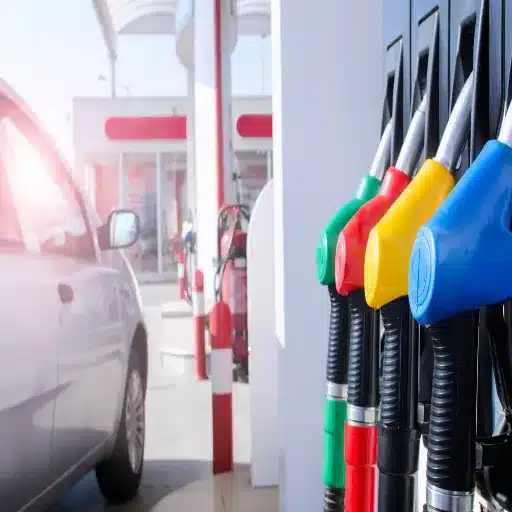
Leading industries, especially those handling buildings, will require a good deal of planning and adherence to safety standards. First, choose a good location that is compliant with the zoning and environmental laws of the area. The site preparation has to be thorough, with all groundwork completed, so as to allow the tanks and dispensers to be securely placed. According to the manufacturers’ guidelines and related regulations, underground/above-ground fuel storage tanks must be installed in a way that prevents any form of leakage and contamination.
The next step involves connecting the fuel dispensers to the storage tanks via piping systems constructed from durable materials of durability and approved. Dispensers should be placed on a firm, level foundation, and ensure alignment allows easy access to customers. Install appropriate equipment, including nozzles, hoses, and emergency shut-off systems, to guarantee the proper dispensing of fuel. Finally, perform thorough testing and inspections before operations begin to verify that all the equipment functions safely and complies with the appropriate codes and standards.
Steps for Proper Installation
-
1
Site Setup
Select an appropriate site for installation and seek proper permits from the authorities. Level the site and clear any obstruction or debris from it for the equipment to be set up.
-
2
Installation of Storage Tanks
Install the storage tanks either underground or above ground in accordance with regulations. Use corrosion-resistant materials, and ensure that tanks are suitably anchored against displacement.
-
3
Piping and Connectivity
Connect the storage tank to the fuel dispenser with approved piping materials of the highest quality, and secure connections to avoid leakages.
-
4
Dispenser Installation
Place the fuel dispenser on firm and leveled ground. Align it well for easy reach and use by customers.
-
5
Installation of Accessories
Hook up the nozzle, hoses, and meter to the safety shut-off system for secure and efficient dispensing of fuel.
-
6
Installation of Electrical Connections
Install electrical connections as per safety codes. Use explosion-proof wiring and grounding systems for protection.
-
7
Testing and Calibration
This phase involves testing all equipment, such as dispensers, for proper functioning and safety systems. Also, fuel meters should be calibrated between sellers and buyers to perform accurate transactions.
-
8
Compliance and Inspection
Conduct inspections to ensure installation complies with local, state, and federal regulations, and respond to any deficiencies and shortfalls.
-
9
Operator Training
Train your staff in safe operations and in emergency procedures pertinent to their equipment.
-
10
Final Verification
An overall review of the whole system shall be performed to verify the operational safety and compliance before ExpoComm.
Safety Considerations During Installation
Safety during installation calls for a proactive approach to spotting and mitigating potential hazards. Several elements are focused on in industry best practices:
Site Assessment and Hazard Identification: Make a thorough site assessment for any possible risks on uneven grounds, electrical hazards, or weather conditions, since slips, trips, and falls have been reported to account for nearly 27% of injuries at work during equipment installation. Hence, a clean and clutter-free work area is essential.
PPE: Make sure all workers wear the appropriate PPE consisting of helmets, gloves, goggles, and non-slip shoes. Data indicate that injuries are reduced by 65 percent if appropriate PPE use is followed.
Tools and Machinery Proper Use: Confirm that all tools and installation machinery are maintained in good condition and are used according to the manufacturer’s instructions. Sometimes misuse or malfunction of the equipment results in an accident during installation.
Electrical Safety Measures: Apply stringent electrical safety measures, such as keeping circuits de-energized during equipment wiring or installation. NFPA states that around 1,200 workplace incidents are recorded yearly due to electrical faults, thereby stressing stringent adherence to its protocols.
Training and Competency: Ensure all personnel engaged in the installation are trained adequately. Proper training lessens the chance of human errors, which often cause accidents.
Communication Measures: Develop a communication line for the organization of safety measures in case of issues. Using standard signals or communication devices can encourage site safety and prevent miscommunication.
Emergency Preparedness: Develop and rehearse an emergency response plan proper to installation environments. It should also cover emergencies like fire, equipment failure, or medical emergencies, whereby workers would have to respond without delay.
Regular Safety Audits: Perform safety audits periodically while installations are being done to maintain compliance with safety standards and identify risks that might not have been taken into consideration. Continuous monitoring could be helpful to counter unpredictable hazards.
These considerations, if thoroughly followed, will work toward eliminating hazards substantially and help in setting up a safe environment conducive to efficient and compliant installation practices.
Modular Equipment for Easy Installation
Modular equipment is geared towards Industry 4.0 for the installation landscape, acting as scalable, flexible, and time-saving solutions ideal for modern industries. Among the advantages of modular systems is the fact that they are customizable and adjustable to specific site requirements, allowing for smooth integration into various operational scenarios. Recent industry trends seem to suggest that installations using modular equipment reduce construction time by about 30%, in contrast to the traditional installation, the major component of which is a pre-engineered or prefabricated way of faster construction or installation.
30% Reduction in Construction TimeModular equipment installations significantly faster than traditional methods
Besides, modular systems are intended to float on the market through ease of transportation and installation, thereby minimizing the potential for errors to be introduced during the installation process. The components of such systems are usually lightweight with connectors that are easy to use. Hence, even a small team can execute the contract without much training or the need for specialized tools. Studies further demonstrate that modularized equipment is extremely cost-effective; the savings in labor costs can go as high as 20%, together with the advantage of reduced downtime.
20% Labor Cost SavingsModular systems reduce labor requirements and associated costs
The multipurpose nature of modular equipment stands out, ranging from modern data centers to manufacturing setups. For instance, the modular pre-fabricated components for a data center can be installed and operational within weeks, as opposed to the months typical of a traditional build. This speedier setup increases agility as well as scalability for future expansion.
Some industries really do consider modularization the way to go, for projects get done swiftly, better safety is itself at the workplace, plus great long-term savings.
Maintenance of Gas Station Equipment

Proper upkeep of gas station equipment is necessary for safety, compliance, and operational efficiency references. Some of the shops include:
Regular Inspections
Pumps, hoses, and tanks should be checked regularly to spot any early wear or damage.
Manufacturer Guidelines
Always adhere to the maintenance schedule and practices recommended by the manufacturer of the equipment.
Leak Detection
Any occurrence of fuel leakage should be looked for and solved immediately since it may lead to safety hazards and environmental pollution.
Cleaning and Calibration
Fuel pumps should be kept clean and properly calibrated to ensure maximum efficiency and customer satisfaction.
Professional Service
Calling upon certified technicians for repair and advanced maintenance will ensure conformance with industry regulations.
Following a maintenance program consistently will reduce downtime and ultimately enhance the lifespan of the equipment.
Regular Checks for Fuel Pumps and Tanks
Regular maintenance of fuel pumps and storage tanks is necessary to keep them in prime condition while ensuring safety. Make an initial visual inspection of pumps and tanks, looking for leakage, corrosion, or any form of physical damage. Inspect the fuel pump meters for correct readings to avoid discrepancies that may affect customers and profit. Maintenance must also include checks on hose and nozzle integrity and seals to prevent fuel loss or contamination of the environment.
Monitor fuel levels in tanks, and periodically test for water presence or microbial contamination that could affect the quality of the fuel. Being an industry standard practice, one must check for the pressure integrity of the tank and identify areas where potential weaknesses in its structure can be located. Keeping the above-ground tanks and underground tanks in compliance also reduces the risk of degradation while refining the lifetime value of the equipment.
Importance of Stainless Steel Components
The offerings of stainless steel element kits are stiff competition across industries because of the advantages they offer: corrosion resistance, longevity, and almost negligible maintenance. Considerable heat, acid, or dust, or any very rough environment, might disintegrate any steel, whereas stainless steel components resist wear and mildew. Some industrial sectors involving construction materials processing, and food-so-called quality work-see stainless steel as a blessing. Being a highly tubular element, stainless steel works out so that it does the job of providing long-term service and electron replacement for anything that needs to be serviced fast. Although it offers everything there is in industrial relations, building with stainless steel also gives some sustainability credentials, as this material can be fully recycled. Sometimes, when it comes to bacterial considerations, one is out of a choice; at least stainless steel being one of them, it is easily sterilized against bacterial growth, making it the top choice for sectors where blood is involved; these sectors are medical and pharmaceutical applications.
Alert Systems for Equipment Malfunction
Equipment malfunction alert systems remain an integral part of maintaining operational continuity and reducing downtime. They detect abnormalities or failures arising in equipment performance through sensors, software, and automatically generated alerts. Advanced monitoring solutions provide real-time updates coupled with predictions of maintenance interventions through integration with the Internet of Things technology (IoT), which stops impending malfunctions from happening. Usual features include alert thresholds following customer specification, multi-channel notifications via emails or texts, and detailed reporting tools to monitor performance trends. Installation and utilization promote safety while maximizing productivity and curtailing maintenance costs, thus rendering the alert systems indispensable in industrial, medical, and manufacturing fields.
Advanced Fuel Station Technologies

Modern gas stations are tailored for maximizing efficiency, safety, and user experience. Major advancements include operations converted to automated payments, contactless fuel dispensing, and real-time fuel monitoring to speed up operations and reduce customer wait times. Currently, many stations also provide integrated EV charging facilities for the ever-growing need for sustainable energy. These technologies promote customer convenience while fulfilling environmental and operational objectives.
DC Fast Chargers: An Overview
DC fast chargers are high-power charging stations intended to provide electricity to EVs at a notably quicker rate than the standard slow rate of Level 1 or Level 2 chargers. These chargers work using direct current, hence they are called DC fast chargers. By directly supplying DC to the EV batteries, it bypasses the EV onboard charger, and the charging process speeds up significantly. The charging time typically ranges between 20 and 40 minutes from 20% to 80%, depending upon the vehicle and the charger capacity.
Innovative Solutions for Fuel Supply
Indeed, innovating in fuel supply would primarily require diversifying energy sources and enhancing energy access. For example, the integration of solar- and wind-based renewable energy with conventional highway systems offers more sustainability. Alternatively, the further development of biofuels, green hydrogen, and synthetic fuels provides cleaner options. Eminently, these can complement a fuel distribution system embedded with smart grid technologies and digital platforms, promising an efficient and equitable access to energy needs while anticipating future demand.
They are generally found in public locations such as highway rest stops, shopping malls, and EV-charging hubs, perfect for long-distance travel. They operate on various standards such as CHAdeMO, CCS, and the Tesla-only Supercharger network, ensuring compatibility with various EV models. The landscape of DC fast charging infrastructure is slowly and steadily growing to match the needs of quick, efficient EV charging solutions.
Future Trends in Gas Station Equipment
Evolving technological advancements, environmental factors, and changing customer factors shape gas station equipment evolution. On one hand, EV charging stations are being integrated with gas stations in recent times to support cleaner energy and further promote the adoption of EVs. There is a focus on high-speed chargers, wireless charging, and solar-powered charging under demand.
Automation and digital transformation are also part of some important trends. Smart fuel dispensers enable contactless payments and support mobile app integration, thus keeping customer-centricity and operational efficiency in mind. Monitoring remote systems is further implemented to facilitate better maintenance of equipment and minimize downtime.
The key driver for innovation in station equipment is sustainability. Vapor recovery systems, energy-efficient lighting, and eco-friendly building materials are among the solutions intended to bring down the environmental footprint of gas stations. Stations are also being thought of as multi-energy hubs; traditional fuels can be dispensed alongside EV charging, hydrogen fueling, and biofuels to serve many energy needs.
The industry thus gives strong emphasis to these advancements so as to create modern, efficient, and green fueling infrastructures.
Reference Sources
The Effect of Facilities and Service Quality on Customer Satisfaction of Gas Stations
Assessment of Health, Safety, and Environmental Risks of Zahedan City Gasoline Stations
Frequently Asked Questions (FAQs)
What Kinds of Equipment Are Required for a Successful Station?
The right kind of equipment is vital in any gas station. The primary equipment consists of fuel pumps, storage tanks, dispensers, and terminal systems. Good-quality service station supplies maximize operational efficiency and customer satisfaction, thereby enhancing their potential to return.
What Role Can Gas Station Equipment Play in Building Customer Loyalty?
Gas station equipment that is easy for customers to use, like automatic shutdown nozzles or internet ordering, goes a long way in creating the perfect customer experience. When refueling and looking at extra purchases are easy, customers return often, thus nurturing loyalty.
What Are the Regulations for Fuel Station Equipment?
Gas stations are rightly made to comply with different regulatory standards, considering the environmental and safety aspects. Double-walled tanks, leak-preventing equipment, etc., should be installed so that contamination of the environment does not occur, and for the safe operations of the station and customers.
How Does Purchasing High-Quality Gas Station Equipment Help Profitability?
High-quality equipment at a gas station can provide more efficient service to its customers, with a better experience for them. Thus, sales may increase, creating a more solid stream of revenue and better profitability.
What Kind of Services Can Gas Station Equipment Enable?
Gas stations can offer services such as tire inflation, selling beverages, and running promotions in the store, besides petrol. Having the right equipment to integrate these services smoothly will attract more customers and increase sales.
What equipment is needed When Installing DC Fast Chargers?
For installing DC chargers, there are requirements unique to any gas station equipment when it comes to electrical infrastructure, proper wiring, and poles for mounting. The investment for such-centered aspects would not only answer actual demand times but also have the gas station positioned as progressive into the future.
How Does the Choice of Pumps Influence Efficiency at a Gas Station?
Any efficient-type pump would cut down on wait time while serving the customer well, thereby encouraging continued patronage. A reliable pump mechanism must always ensure smooth operations within a gas station.
What Is the Role Promised by Modular Equipment in the Station Operation?
Modular gas station equipment works wonders for flexible operations. The station may enlarge its offering or upgrade its systems without really having to tear down work. Such flexibility would allow better usage of space and resources, thus ensuring improvement in efficiency.

